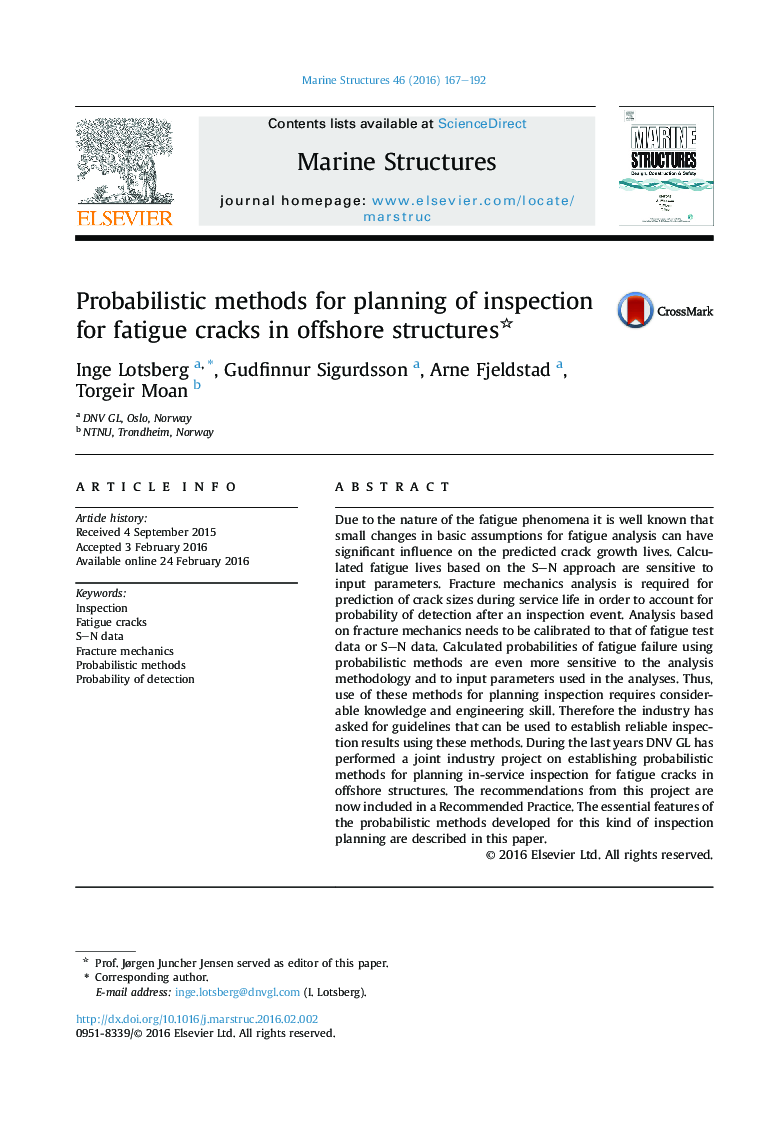| Article ID | Journal | Published Year | Pages | File Type |
|---|---|---|---|---|
| 294357 | Marine Structures | 2016 | 26 Pages |
•Presents inspection planning of fatigue cracks in structures based on consistent fatigue analysis and probabilistic methods.•Calibration of fracture mechanics to S–N data to derive probabilistic models for crack growth analysis.•Inspection planning for fatigue cracks based on probabilistic methods can be more easily performed by engineers.
Due to the nature of the fatigue phenomena it is well known that small changes in basic assumptions for fatigue analysis can have significant influence on the predicted crack growth lives. Calculated fatigue lives based on the S–N approach are sensitive to input parameters. Fracture mechanics analysis is required for prediction of crack sizes during service life in order to account for probability of detection after an inspection event. Analysis based on fracture mechanics needs to be calibrated to that of fatigue test data or S–N data. Calculated probabilities of fatigue failure using probabilistic methods are even more sensitive to the analysis methodology and to input parameters used in the analyses. Thus, use of these methods for planning inspection requires considerable knowledge and engineering skill. Therefore the industry has asked for guidelines that can be used to establish reliable inspection results using these methods. During the last years DNV GL has performed a joint industry project on establishing probabilistic methods for planning in-service inspection for fatigue cracks in offshore structures. The recommendations from this project are now included in a Recommended Practice. The essential features of the probabilistic methods developed for this kind of inspection planning are described in this paper.
